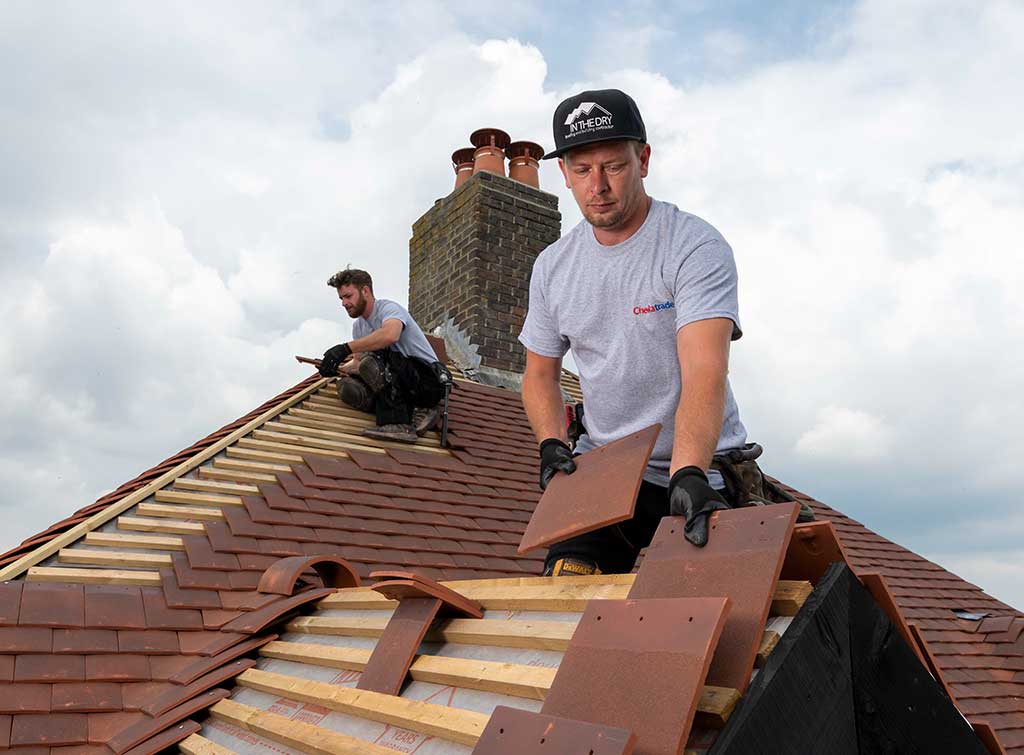Understanding Typical Roof Replacement Prices in the UK: What Householders Need to Know
Understanding Typical Roof Replacement Prices in the UK: What Householders Need to Know
Blog Article
Roofs in the UK are subjected year round to a variety of weather conditions. The constant exposure to weather conditions, from heavy rain and snowfall in winter to high winds and fluctuating temperature can wear down roofing materials. These environmental factors over time can cause roof damage. In some cases, a replacement may be the only solution. It is an expensive undertaking to replace a roof, but is necessary for the home's structural integrity and to prevent future repairs. Whether the roof is leaking, aged, or damaged, knowing when and how to replace it is crucial to ensure the continued protection of your property.
Roof replacements are necessary when damage is too severe to repair. Roof deterioration can be caused by age and regular wear, leading to leaks, sagging or the removal of shingles. In the UK, tiles, flat roofs and slates are all common roofing materials. Each has its lifespan. Asphalt shingles can typically last 20-30 years, while clay or concrete roof tiles last up to 50 years. When these materials begin to fail, replacement is the most cost-effective solution to prevent further damage to the home's structure and interior. It is important to replace your roof for safety reasons and the protection of your house.
Replacing a roof in the UK involves careful planning, especially when it comes to selecting materials that comply with local building regulations and weather requirements. For listed properties or houses in conservation zones, specific tiles and slates may be required to match the original aesthetic. Beyond aesthetics, the materials must also withstand regional climate conditions, particularly in areas prone to heavy rainfall or strong winds. Many homeowners choose slate or tiles because of their classic look and durability. However, modern options such as composite and synthetic tiles have gained popularity due to their energy-efficient design and lightweight construction. Replacing a roof is also an opportunity to improve insulation and ventilation, helping to lower energy bills and increase indoor comfort. Good contractors will consider all of these factors and provide guidance for the most suitable solution to each house.
Costs for a Typical roof replacement prices in the UK vary depending on a number of factors, including the type of roof chosen, materials used, and complexity. On average, homeowners can expect to pay between 5,000 and 12,000 for a standard three-bedroom house, although costs can be higher for larger or more complex properties. Labour accounts for a significant portion of this expense, so it's important to choose a reliable and experienced contractor. Ask for written estimates, read reviews and ensure the contractor is certified and insured by an accredited trade association. In some cases, local councils or government schemes may offer financial assistance or incentives for roof replacements that improve energy efficiency. Although the investment can seem steep, a new roof can add substantial value to your home and provide peace of mind for years to come. To get new information please visit the website
Timing is also an important factor to consider when planning a roof replacement. The UK's weather can be unpredictable, and roofing work is best done during dry, mild months such as late spring or early autumn. The project can be scheduled during the best season to reduce the chance of being delayed by rain and storms. The length of time it will take to complete the project is also important. It can range from several days up to two weeks depending on its complexity. There may be disruptions to your daily routine, such as noise or temporary scaffolding, during the process of replacing your roof. Preparation, including informing neighbors and making plans for small children or pets, will help reduce stress. Good communication with your contractor will ensure that the timeline is clear and expectations are managed throughout the process.
One of the key considerations when replacing a roof in the UK is ensuring that the work complies with local building regulations. Depending on the type of property and the extent of the work, you may need to apply for planning permission or building regulations approval before starting the replacement process. Some areas, such as conservation zones or listed buildings, have stricter regulations regarding materials and methods for replacing roofs. Working with a roofing contractor who understands these rules and regulations is crucial. They can make sure that all requirements are met. Failure to comply with these regulations can lead to fines and the necessity to replace the roof using approved materials.